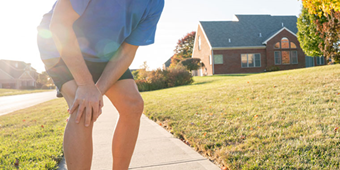Managing Shin Splint Pain

Find Your Perfect Match
Answer a few questions and we'll provide you with a list of primary care providers that best fit your needs.
One common exercise-related problem that most people have experienced at least once in their life is shin splints.
Shin splints refers to a sharp pain along the inner edge of the tibia (the shin bone). The medical name for shin splints is medial tibial stress syndrome.
Inflammation of the muscles, tendons, and bone tissue around the tibia is the cause of shin splints. The inflammation occurs when the leg’s muscle and bone tissue are overworked by repetitive activity, usually during exercise.
Many times, a change in the amount of activity or activity level can trigger shin splints. However, having flat feet, worn-out shoes, abnormally rigid arches, or the wrong shoes also can cause the issue.
Runners, dancers, and military recruits are most commonly diagnosed with shin splints.
Shin splints most often can be treated non-surgically by resting and taking a break from the activity causing the pain.
Additional recommendations to treat shin splints include:
- Choose supportive shoes with good cushioning to reduce stress on your shins.
- Stretch lower leg muscles to gain flexibility and ease pain.
- Take a non-steroidal anti-inflammatory drug (NSAID) – such as aspirin, naproxen, or ibuprofen – to help reduce swelling and pain.
- Use ice packs 20 minutes at a time, multiple times a day.
- Wear a compression bandage to prevent swelling.
- Talk to your doctor about the possibility of needing orthotics (shoe inserts).
If you are having frequent shin pain, you should discuss the issue with your health care provider to make sure it is shin splits and not a stress fracture.
A stress fracture is a small crack in the tibia caused by stress and overuse. It’s important to know the difference so you can make sure the injury heals correctly.
Find Your Perfect Match
Answer a few questions and we'll provide you with a list of primary care providers that best fit your needs.
Source: American Academy of Orthopaedic Surgeons




